#Pictorial works
Text

#botanical illustration#scientific illustration#botany#pictorial works#plants#periodicals#flowers#carex flava#yellow sedge#hedgehog sedge#carex pallescens#pale sedge#sedge
22 notes
·
View notes
Text
Jājā biribiri
New item:

The book is with full of fun, clear pictures and rhythmical Japanese onomatopoeic words. A picture book that helps infants to recognise objects from their sounds.
NDC 9th: 814.35 MAT (@ children's book section)
Jājā biribiri.
by Matsui Noriko.
Kaiteiban.
Tōkyō : Kaiseisha, 2015.
9784031024402
[22] unnumbered pages : colour illustrations, 14 x 14 cm.
(Matsui Noriko akachan no hon).
Text in Japanese, hiragana only.
#japanese language#onomatopoetic words#pictorial works#juvenile literature#picture books for children#jteacher#jlearner
0 notes
Text
Angela ~ Felix Benedict Herzog
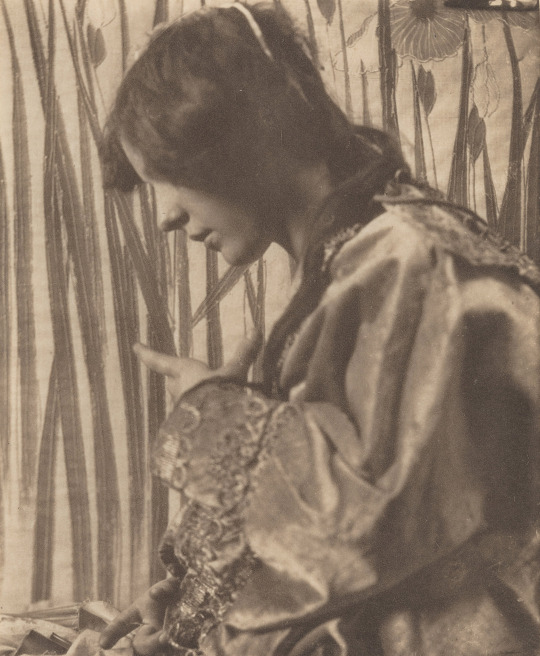
F. Benedict Herzog (American, 1859-1912) ~ Angela, from Camera Work XII, 1905. Photogravure. | src Heritage Auctions
view more on wordPress

F. [Felix] Benedict Herzog · pl. II. Angela. Camera Work, 1905 vol. 12. | src Universitätsbibliothek Heidelberg
more on wordPress
#F. Benedict Herzog#Felix Benedict Herzog#Camera Work#pictorialism#photosecessionism#pictorialist portrait#portrait#photosecession#pictorialisme#pictorialismo#Angela#Piktorialismus#pictorial portrait#1900s#Porträt#retrato#ritratto#portret#retrat#Bildnis
71 notes
·
View notes
Photo

Arnold Eagle. Three men stand in a greenhouse, about 1940–1942.
#Arnold Eagle#photography#fragrantblossoms#Pictorial Presentation. N.Y.A. Work Experience Activities in New York City.
481 notes
·
View notes
Text
Hey hey please look at this little kit I put together,it took me 2 days!

I actually got it for Christmas last year but didn't get time to build it until now. It was so much fun! And a test of patience, because you basically have to build 80% from scratch :"D



It lights up too! I was scared of doing the wiring but it was pretty easy!
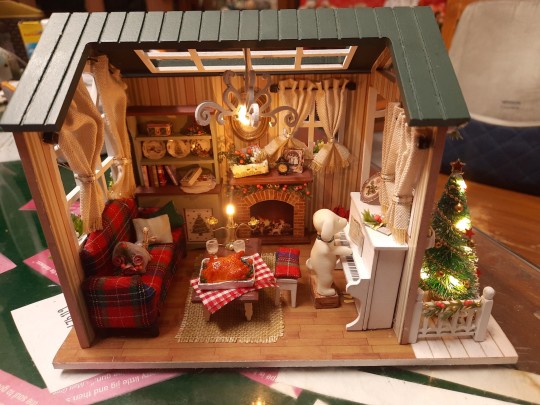
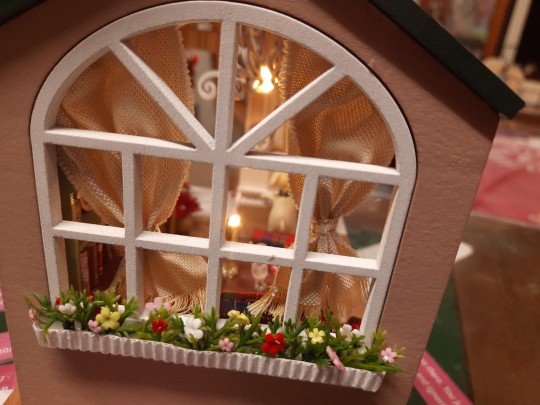
I didn't do what they instructed for the flowers in the windowsill,but used materials from my own stash.


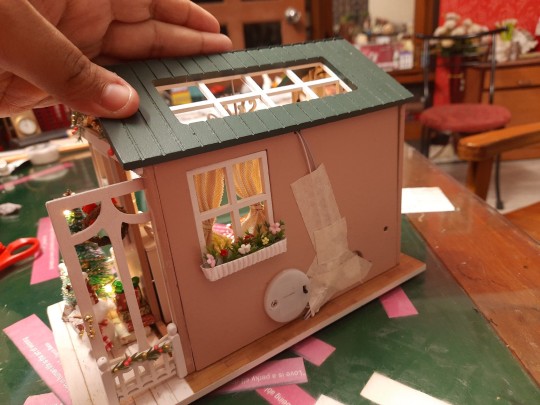
The back is a little unsightly,but maybe I can make a chimney to hide the wiring?
#for the sofa you get precut wood pieces#and uncut fabrics#for the roses just paper and instructions#the curtains just cloth and instructions#the cupboard and piano are precut wood pieces as are the door and window panels#you have to make the pillows too and I discovered that using a hair straightener worked wonders#instructions are in Chinese which I can't read but very pictorial so easy to follow#i loved doing this#I should do more
16 notes
·
View notes
Note
How do you make your stencils? Assuming you do it without fancy equipment just like the sewing
Your assumption is correct. Nothing fancy here. Everything is done the old school way.
It's pretty simple but takes patience and skill with a Xacto knife. My process may be more involved but gives me the best results and stencils I can reuse many times.
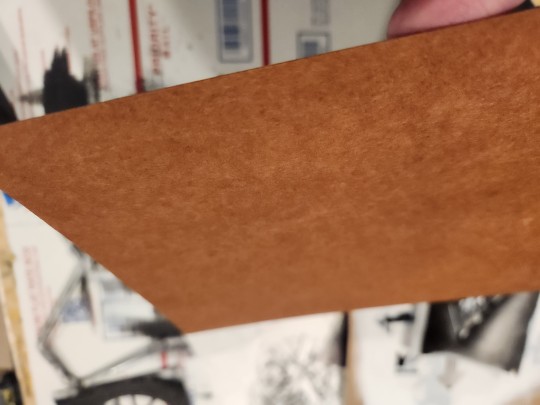
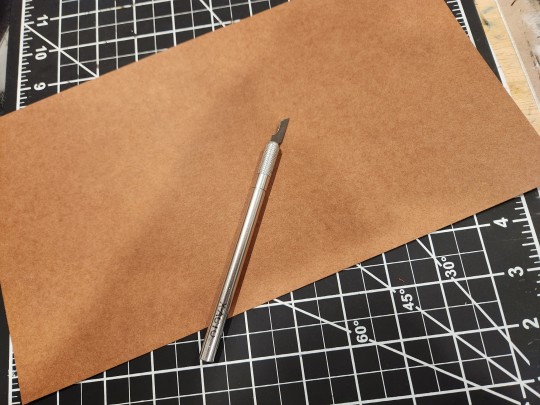
First up, stencil board options. I'm currently using this oil board but you can use 4 mil. mylar, bristol board, watercolor paper, postcard stock, thick envelopes, thin cardboard, poster board or even a soda can box. The material you choose will determine the lifespan of the stencil!

Now select your stencil image. Since I just made this DRI stencil I will use it for example.
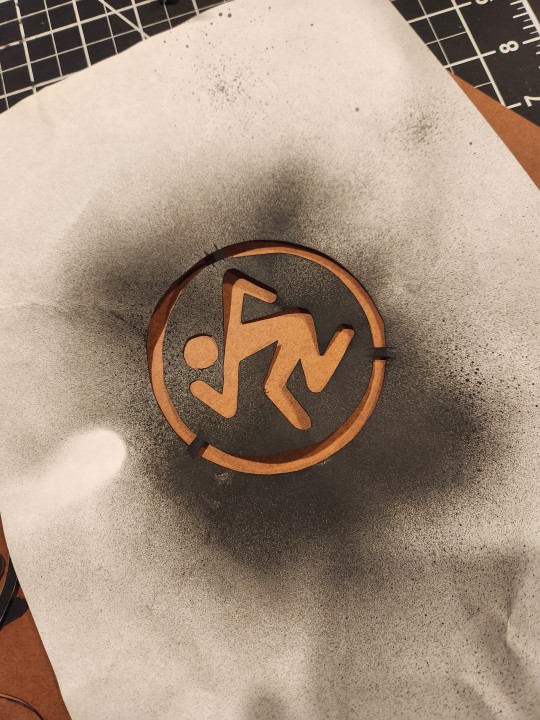
I first draw it out on scratch paper or you could print an image. Then cut out the paper stencil. This is basically to test the design, transfer it to a different medium and make adjustments like line thickness and separations.
I use spray paint to transfer the paper stencil image to the oil board or thicker material.
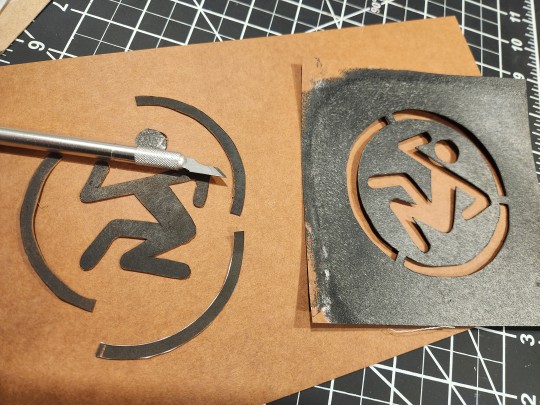
Now you can see what your stencil image will look like and can tweak it before committing to the thicker hard to cut material. You can see here I use this specific smaller blade and the cutting matt underneath also helps.

Cut out your final image and bam.
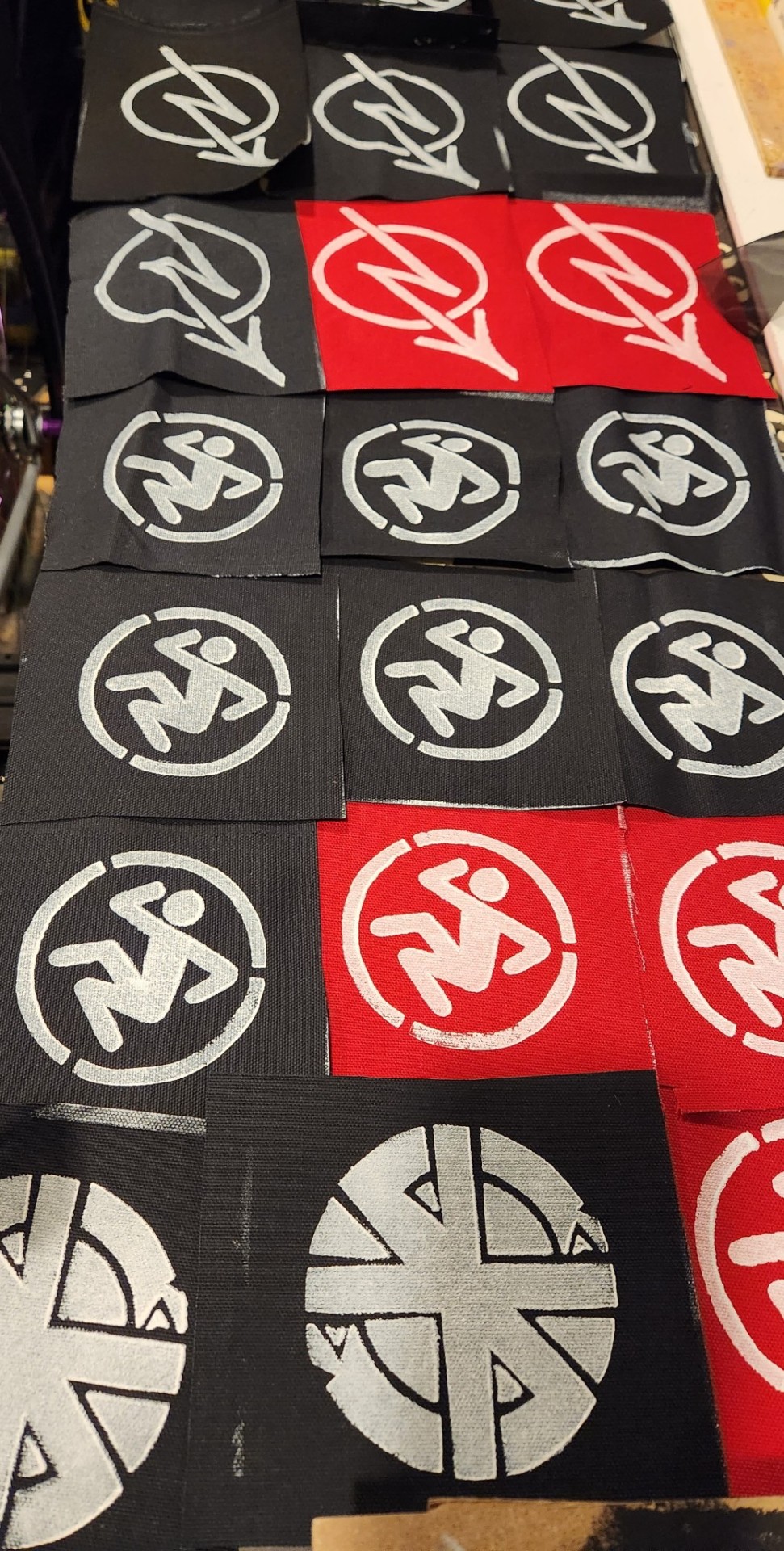
I'm using a roller brush and acrylic paint but you can use spray paint or that leftover house paint in the shed.
Not every image will come out exactly the same but for me that's the magical part I like because it makes each one unique/special.
*pro-tip: If you really like how your new stencil came out, stencil it onto another piece of your thicker material but don't cut it out. That way when your first stencil dies you can cut out another one just like it but with less steps involved.*
#diy#punk#stencil#how to#fyi#knowledge#the more you know#old school cool#handmade#mine#work in progress#questions#answers#tutorial#pictorial
10 notes
·
View notes
Text

Annie W. Brigman - Dawn, 1912
Photogravure
20 notes
·
View notes
Text
did i see one single extra picture from the shua 1st look pictorial and immediately cave and buy the magazine, maybe i did, pls don't look at me
#personal#i didn't even buy woozi's first ever magazine pictorial and here i am breaking my own magazine-buying ban to buy this one#in my own defense he's very cute#and i said i could buy whatever treats i wanted to this week bc i got through Big Project at work (mostly)#so that's part of my Treat Yo Self agenda#also someone said it was like 10 pages of shua it's fine it's fine
6 notes
·
View notes
Text
quem vier atrás que feche a porta

quem vier atrás que feche a porta, 2023
técnica mista s/tela [80x80]

«quem vier atrás que feche a porta. ditado popular português usado normalmente para expressar a ideia de que alguém, que não o próprio, deve lidar com a(s) me#d@($)! deixada(s) para trás. Atribuição de responsabilidade ou um alerta sobre as ações ou negligências de terceiros para resolver questões deixadas por aqueles que vieram antes.» in Magriço (2023) Elucidário de Palavras e Afins
0 notes
Photo

Aprovechando mi cumple 🎉 Foto profesional para @linkedin 😬 . . . #picture #pictureoftheday #pictures #PicturePerfect #pictureday #pictoftheday #picturesque #pictureofday #picturebook #pict #pictureline #pictorial #picturesoftheday #picturebooks #picturepakistan #pictureframe #pictureofme #picturetime #work #pictogram #picturelove #picturequotes #pictureframes #pictureoftheweek #picturegram #pictureedit #pictofday #pictur #pictureoftoday #professional (en Lima, Peru) https://www.instagram.com/p/CfKNn1VvDT3/?igshid=NGJjMDIxMWI=
#picture#pictureoftheday#pictures#pictureperfect#pictureday#pictoftheday#picturesque#pictureofday#picturebook#pict#pictureline#pictorial#picturesoftheday#picturebooks#picturepakistan#pictureframe#pictureofme#picturetime#work#pictogram#picturelove#picturequotes#pictureframes#pictureoftheweek#picturegram#pictureedit#pictofday#pictur#pictureoftoday#professional
0 notes
Text
#botanical illustration#scientific illustration#botany#pictorial works#plants#periodicals#flowers#ailanthus glandulosa#tree of heaven#invasive#smells nasty#i hate these mfs#alianthus#stinking sumac#varnish tree#copal tree#chinese sumac#paradise tree#chouchun#臭椿
21 notes
·
View notes
Text
Sekai achikochi yukai na ie meguri
New item:

"Mr. Komatsu, a photographer who travels the world in search of interestingly shaped houses, introduces some of the most unusual houses, such as "a house with an upside-down roof", "a house where everyone lives in a circle", and "a house that breathes through a chimney", among others. The book shows not only the exterior of the houses, but also the inside of the houses, with amusing illustrations. Finely drawn illustration of the book will draw your attention not only to the people living in the houses, but also to the interior decorations and the animals living with the household! Which house would you like to live in?
Shelf: 383.91 KOM (@ tadoku section)
Sekai achikochi yukai na ie meguri.
text and photographs by Komatsu Yoshio ; illustrations by Nishiyama Akira.
Tōkyō : Fukuinkan Shoten, 2004.
ISBN: 9784834020731
40 pages : colour illustrations, colour map ; 26 cm.
(Takusan no fushigi kessakushū).
Originally published as a feature in a monthly magazine "Takusan no fushigi" by Fukuinkan Shoten in 1997.
Includes bibliographical references on end paper.
Text in Japanese with moderate furigana on kanji characters.
0 notes
Text
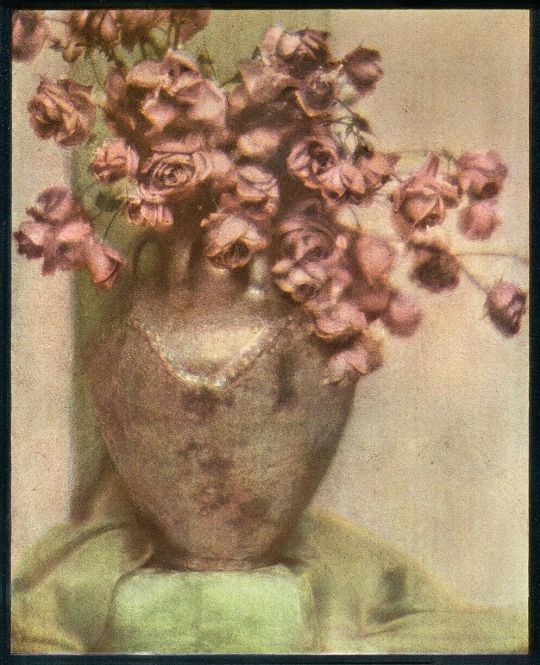
Baron Adolf de Meyer (1868 – 1946) :: Nature morte # 2, 1908. Halftone from an Autochrome dating from 1908. | src eBay
view more on wordPress
#1900s#adolf de meyer#Adolph de Meyer#Adolf de Meyer#Baron Adolf de Meyer#autochrome#autochrom#autokrom#additive color screen plate#Autochrome#Lumière Autochrome#baron adolf de meyer#baron adolph de meyer#Camera Work#colour photography#early color#early colour#halftone#pictorialism#pictorialisme#pictorialismo#Piktorialismus#still life#Stillleben#nature morte#naturaleza muerta#natura morta#vase of flowers
125 notes
·
View notes
Photo
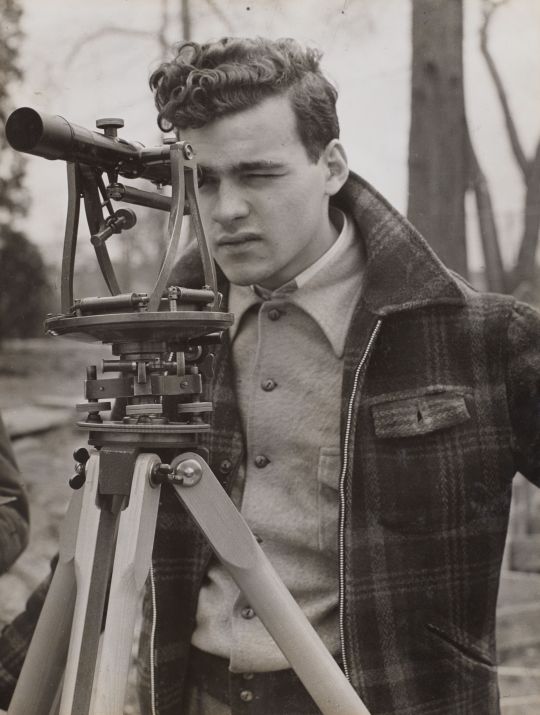
Arnold Eagle. Young man peers through a surveyor's tool, about 1940–1942.
#Arnold Eagle#photography#fragrantblossoms#Pictorial Presentation. N.Y.A. Work Experience Activities in New York City.
178 notes
·
View notes
Text

Bruce Sargeant in his studio with model (c.1930) by Mark Beard
Mark Beard has become famous thanks to the creation of several fictional characters, each with a detailed biography that marks his own pictorial style, which allows him to recreate different styles, from nineteenth-century expressionism to post-modern art. His paintings and bronzes have been exhibited all over the world. He is a very skilled and versatile artist, working not only with different styles, but also with different media: bronze sculpture, ceramics, oil painting, drawing or architectural models. Bruce Sargeant is one of those fictional characters.
342 notes
·
View notes
Text
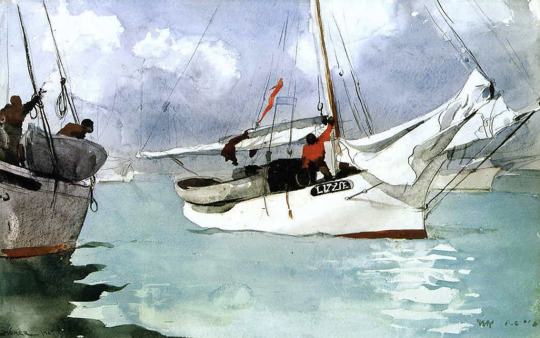
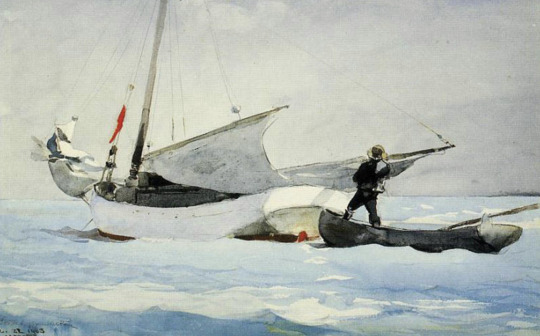

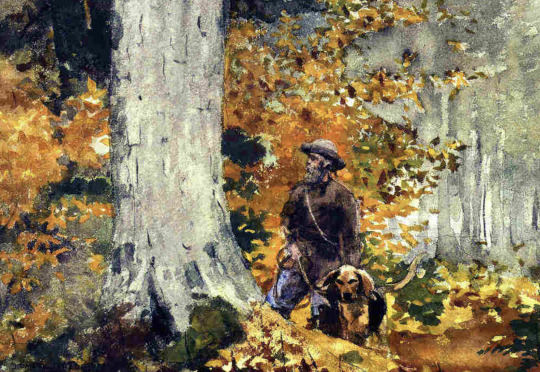
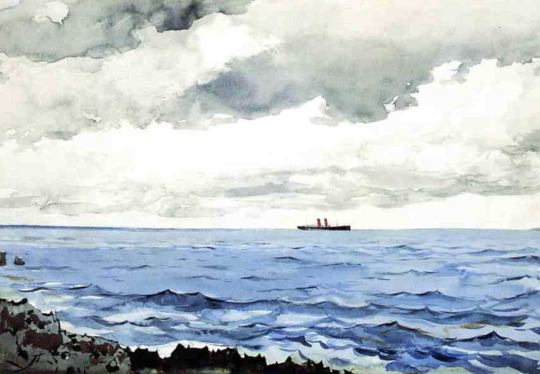


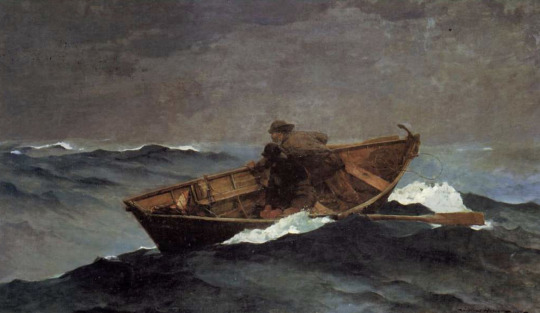
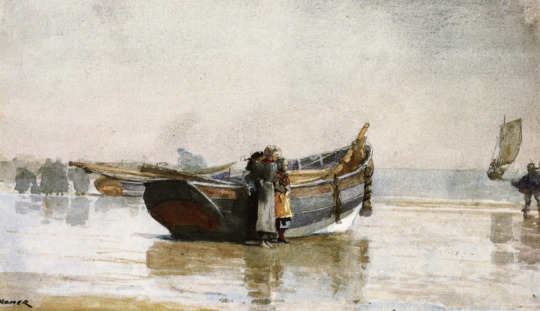


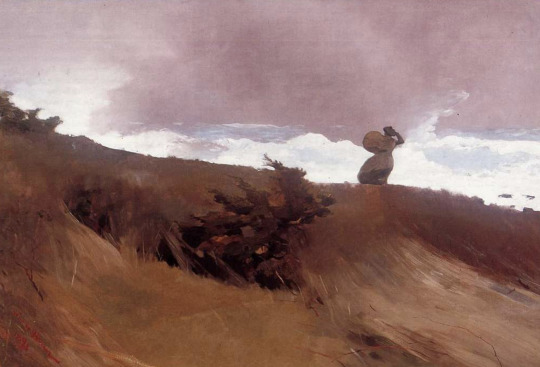
Winslow Homer
1836-1910. American
When I see an unfinished sketch, or an image that feels drawn by a hand, I experience beauty.
I don’t know why. I think it is beauty. It is a feeling I appreciate. I want to hold on to that feeling,
Or at least draw it out. It feels like a musical note that doesn’t end. It’s dynamic, not static.
It feels pure but I am not sure why.
Is the experience of the emotion detached from the image?
It needs to be right? Otherwise, everybody would be feeling that same emotion.
So,what is it? What is it about a drawn line that makes people feel that,
I look at Homer’s watercolors and I am always caught off guard by that feeling of beauty and awe.
Is it the fact that I see a boat, I feel the heat,I sense the passage of time and yet, I am fully aware that my brain is deceiving me? That I am not seeing any of it but just imagining it?
I wonder if I read his work through my knowledge of life and that is what creates the feeling of beauty?
Homer's work helped me realize that a body of work is a conversation the artist is having with themselves.
Exploring the world and trying to make sense of what is important to them.
Homer’s work starts with illustration of war and nostalgic life style images.
As he progresses in life, the need for plot devices fades away. It frees his mind to focus on what keeps drawing back to art. Homer still paints everyday scenes but the emphasis is on the relationship between nature and man. The power of one, the place of the other. No commentary, just observations
Themes that were present in his earlier work but hiding by the needs of traditionally accepted beauty, the works that sell.
The funny thing is that Homer was broke for most of his life. He only became comfortable in his mid fifties when he would focus on these conversational paintings.
Technically,his work gets better, pictorially, it becomes simpler, more bare.
There is something reassuring and inspiring about Homer's path. The older he got, the stronger his work became.
It seems to go against the thought that artists are like athletes. They go through their heyday first and live to remember them.
Homer's path is more like a wine that gains in character as it ages.
455 notes
·
View notes
